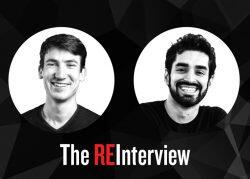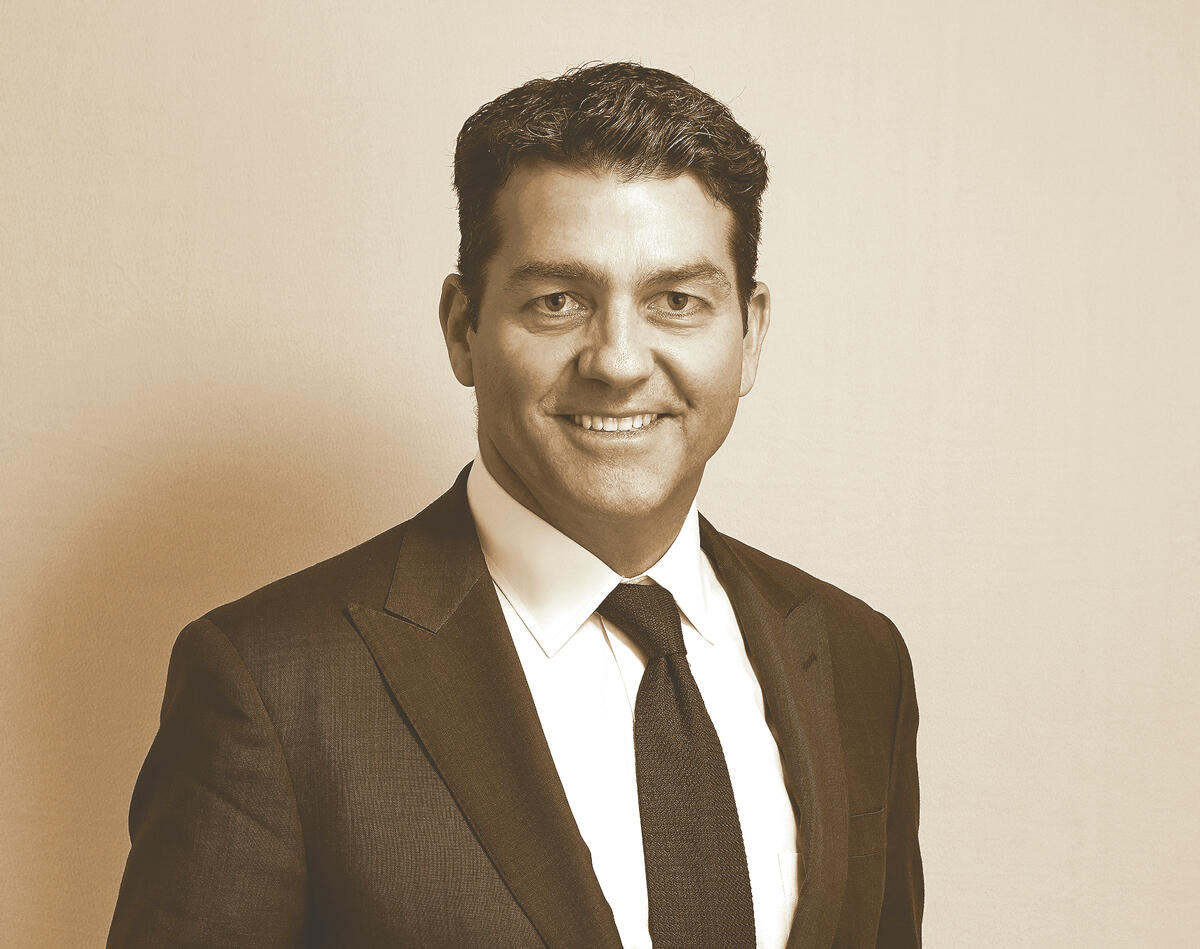There’s an iconic scene in “The West Wing” where Martin Sheen’s President Bartlet urges an acolyte to “see the whole board,” to understand all the stakeholders and implications in a given situation simultaneously. It’s a geopolitical masterclass, conducted over a chess game.
Few builders can take that approach to development, as it requires scale, capital, a global presence and influence over construction and the supply chain. Lendlease is one of them. The Australian company, which has over $100 billion in development projects across the world, has ramped up its presence in core U.S. markets, with its own projects such as 1 Java Street in Greenpoint, Brooklyn, a $600 million office and residential project in Los Angeles and a joint venture with Google to bring 15,000 housing units to the Bay Area. It continues to serve as the general contractor on some of the country’s most notable projects — past buildings include 432 Park Avenue and One57.
The Real Deal caught up with Denis Hickey, Lendlease’s CEO for the Americas and global COO, to dig deep into the firm’s approach to sustainable development at scale and how the company is rethinking all aspects of the process, from construction and materials procurement to artificial intelligence and automation.
Where does New York stack up globally in terms of innovative development?
Manhattan is a concrete jungle. It’s a difficult place to develop. So whether it’s a 432 Park or a One57, it’s remarkable what our construction and engineering teams can deliver here on very small parcels of land. They are a testament to world leadership in what can be done from a construction engineering standpoint. But it is very much a vertical-solution city. A lot of the solutions around the world tend to happen in bigger, more horizontal sites. And so to create some of the leading-edge thinking around environmental solutions, energy solutions, living shorelines, you sometimes need a bigger footprint of land to be able to do that.
If you look at 432 Park or One57, they have a very small interface with the street. And so what you can do with the ground plane is limited. If you go into a bigger site you can interface with more of the street plane and you can get public open space, and you can think about how you bring in other solutions around land usage. But some of the innovation on some of these other projects around how concrete is poured — you know, what is the engineering solution — waste management, all of those things, New York leads.
Lendlease is an integrated company. We turn over $15 billion a year in construction. We’ve got a development book, globally, of over $100 billion. We manage over $30 billion of investment from other people. When you put all of that together as an organization, the learnings you get from each part of that value chain is circular. We can take those learnings into other cities. We’ve exported that knowledge into different markets. That’s one of the great things about being global and also being integrated.
Your Greenpoint project includes a “living shoreline.” What does that entail?
Rather than having a hard revetment wall where your tidal shoreline moves up and down, you kind of bring the shoreline into the water and allow the interface with the public to be more tidal and more interactive with the common space, such that any movement in sea levels or water levels can move up and down with your site. We did this in Boston at Clippership Wharf, and it was really a benchmark for environmental solutions on shorelines. And as the water moves up and down, we actually make sure that we have a range of green solutions to treating water and making sure that access can evolve with the use of the site. Embrace the water and be part of the water rather than putting up a barrier. We still have the natural barrier, but the interface with the water is seamless rather than harsh. And it’s just a much better environment for the community.
Sustainability has been a big focus for the largest developers. What’s Lendlease’s approach to it, and how much of it is public relations?
It’s about our purpose. We feel a great sense of accountability and responsibility around creating great places, and doing that in harmony with the environment and the community. So we’re always looking to push the envelope. What’s the latest thinking, how do we actually create something that hasn’t been done before? How do we actually make sure that when the people live here in 10, 20, 30 years’ time, that the site evolves with them?
We built a development in Sydney back in 2010 that was carbon-neutral a decade before it became popular. What you’re seeing in the marketplace now is that society is looking for corporations to take a lead in the solution rather than governments mandating one. And you’re seeing capital saying, “I only want to partner with people who believe this as well, and I’m going to put my money with people who believe in contributing to a better solution for this planet.” Now that both capital and shareholders are demanding it, corporations become more accountable.
There is no universally acknowledged standard for what constitutes environmental responsibility. We talk about ESG, but a lot of standards out there are for-profit ones developed by industry people.
For a long time, people’s response to the sustainability movement was around compliance. It was not really a proactive tool to shape business decisions. I think that’s what’s changed. There’s an alphabet soup of people out there who claim they have some involvement in green rating and measurement. We look at what we are going to do for the impact of the community and what is any environmental solution going to do for us as a company? We are focused on the TCFD measurement, which looks at not only what you are doing today, but what’s your forecast portfolio of business, what impact, as climate change evolves, will that have on your economic performance as an organization. We introduced a net-zero initiative that is really looking to get us to carbon neutrality by 2040.
Even net-zero is a pretty loaded term.
Well, the word “net” can often be misleading as well, because people say, “I’m net zero,” but the way they get there is to write a check or to do some financial offset. The real thing is to get to absolute zero. And that’s what we are targeting for. The buildings, whether they’re new or existing developments, are absolute zero [in carbon impact] to the environment. That’s our target, and that’s on Scope One, Two and Three [all direct and indirect emissions, including those in the supply chain]. We’re already starting to see that initiative reduce consumption of concrete.
One of the big ways to get there has to be materials engineering. How does Lendlease’s position as a major general contractor play into that?
We’ve got over 40 people sitting in just our supply chain management, not doing any procurement, just working with supply chain and asking, “How do we do R&D, how do we pioneer? How do we test, how do we push the envelope across the spectrum?” Whether that’s through HVAC emissions, through manufacturing of certain materials, through waste management or energy consumption. Crisis is sometimes the necessary driver for innovation. The world is pretty attuned to the massive looming issue we have if we don’t change and decarbonize.
Read more from The REInterview



1 Java Street in Brooklyn
What do you think the biggest levers for change will be?
The world is really going down the renewable energy path. The other parts are around structure materials, around manufacturing concrete and steel. We’re doing a lot with cross-laminated timber. We think that’s a very viable way. Not only is it a naturally grown resource, it’s very emissions-friendly in terms of a livable building.
In Barangaroo, in Sydney, we built two office buildings at the base of 3 million square feet of mixed-use development. These sister buildings are six, seven stories and effectively all built out of cross-laminated timber. And it really looked stunning. The feedback’s amazing because the timber becomes part of the workspace and you live and breathe it. And the byproduct of that is you actually seeing investors wanting to buy those buildings. Tenants are going to want to occupy those more, and investors want to own those buildings more. So it’s creating more value right through the real estate chain.
Implementation of existing tech is one piece of the puzzle. The other is R&D into new tech.
Artificial intelligence and digitization are going to be the way to get greater productivity and less waste from sites. We are going to become smarter in measuring the output of buildings. We’ve created a company called Podium, which is around digitizing the development and construction space.
Once you bring a higher level of predictability and design engineering, can you bring in new materials for structure, new materials for facade and use recycled materials and things that we probably don’t intuitively think about now? The best way to think about that is if you go back into the ‘70s, all cars were made with metal bases. Now they’re all carbon fiber.
You announced a joint venture with Google to bring 15,000 units of housing to the Bay Area. What’s the status of that project? Big Tech has been under scrutiny for its impact on housing affordability in tech hubs.
It’s driven by Google saying, “We’re a long-term member of the Bay Area community. We want to house our workers in a community that is responsible and contributes back.” Our partnership is around how we can help them get what they really want and also deliver some of the solutions around residential and mixed-use.
There are four districts that we’re working on in the Bay Area. The first phase of that is to come up with the master plan solution. We’ve had one of those master plans approved in San Jose. We’d like to get all of it evolved in the next 12 to 24 months and start construction.
Sometimes planning can be kind of an antagonistic process. You sometimes get a developer who’s trying to force a solution. The approach that Google and Lendlease really took here is a combined effort to work with the [San Jose city] councilors, work with the stakeholders. Everybody was a bit skeptical at the start. But the team did an amazing job engaging with all the stakeholders, and the solution that got through [had] unanimous council support and huge support from the community. That’s really unusual. And I think it comes back to genuinely consulting, genuinely partnering with communities and councils. Perversely, we are all in the same situation in terms of outcome. Sometimes it looks confrontational, but ultimately everybody wants a great community.
The last couple of years have seen a rise in construction tech. How is that altering the landscape?
We’re at the early stages of construction tech coming through and really changing the methodology from, say, traditional construction to assembly. Where technologies come in is, how do we get greater insights to make their work easier, safer, faster and more effective? One of our core principles is that every person has the right to go home at nighttime to their families. So safety’s the number one objective.
There’s a whole range of innovation you drive, and you work with the hardhats and the contracting fraternity. When you take the time to work with them and demonstrate the value that can be gained, they’re amazing and supportive and they come with you on the journey. If it’s a policing environment, just telling people what to do, because that’s what you want to do, then there’s great resistance.
You can’t hold back innovation. And so once that innovation comes through, you know, it’s about working collaboratively with the trades and the subcontractors to say, how do we create more opportunity and give people more visibility? And that may be having fewer people — instead of having 50 people on a port deck, we’ve got 20 people on a port deck. Okay then, how can we do more projects with you?
This interview has been condensed and edited for clarity.
(Write to Hiten at hs@therealdeal.com or @hitsamty on Twitter. To check out more of The REInterview, a series of his in-depth conversations with real estate leaders and newsmakers, click here.)

